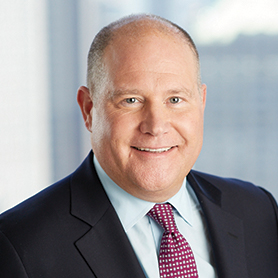

In a report published this month by Guy Carpenter, we analyze how an accumulation of losses from recent extreme weather events, the specter of climate change and higher loss cost trends in a number of long-tail business lines are forcing carriers to reassess views of risk. Capital inflow levels and risk appetites are responding accordingly, according to Robert Bentley, CEO, Global Strategic Advisory, Guy Carpenter.
The (re)insurance sector has a long history of responding to periods of change and is well versed at navigating market defining events such as Hurricane Andrew, the terrorist attacks of September 11, 2001 and Hurricane Katrina. The years 2017 and 2018 were no different – a series of sizeable events led to the costliest two-year period ever for insured catastrophe losses. “After years of strong capital growth, the reinsurance market has been resilient to these losses and conditions remain largely favorable to cedents. But as recent developments have shown, events that challenge underwriting risk assumptions can still impact capacity deployment,” Bentley explains.
“Reinsurers operating in the Florida market, for example, have reassessed their views of risk to reflect increased social inflation costs associated with Hurricane Irma,” Bentley continues. “Due in large part to complex (and longer-tailed) loss drivers such as loss adjustment expenses and assignments of benefits, no other hurricane loss in recent history has developed adversely to the duration and extent of Irma.”
Additional insured catastrophe losses in 2018 have added to loss burdens. These included Typhoon Jebi, the strongest typhoon to hit Japan in 25 years, and yet another prominent example of adverse development. Creep from Hurricane Michael has exacerbated the situation.
Bentley continues: “Costs for non-peak perils in recent years have also accumulated to make a significant contribution to industry losses. Wildfires especially have come under close scrutiny after losses in California in 2017 and 2018 spiraled to become significant reinsurance events. Such outsized losses are not commensurate with a view of risk that has considered wildfire to be an attritional peril.”
“Underlying assumptions are therefore being reassessed to reflect more closely the contribution wildfires and other ‘attritional’ perils can make to overall expected losses. The accumulation of losses from diverse perils is a trend that is occurring globally. Carriers have generally believed that a global spread of risk provided diversified premium, and that capital could be ‘reused’ in non-correlated zones – until multiple peak zones were hit by a series of events in a relatively short period of time.”
The specter of climate change only points to a future that will see more frequent and severe weather events. “Excessive rainfall and rising sea levels clearly bring an enhanced threat globally for more frequent and severe freshwater and coastal flood events,” he adds. “And sustained trends around increased wildfire activity and stalling hurricanes are thought to potentially have some link to the changing climate. Risk models, already under scrutiny due to the magnitude of loss creep for virtually every major loss sustained in the last couple of years, will need to be recalibrated.”
“All this has inevitably impacted the market and brought about a period of reflection as capital inflows into the reinsurance sector have slowed. Insurance-linked securities capacity has been curtailed so far this year, with investors more disciplined in deploying capital and more determined to achieve higher returns. Market conditions have tightened as a result,” says Bentley.
How the risk landscape evolves from here will be pivotal in shaping the future of (re)insurance. The impending degree of change that is to come with climate change, technological disruption, the shift from tangible to intangible assets and the transfer of liability from individuals to large manufacturers looks set to transform the risk landscape like never before.
Bentley mentions that whatever the future holds, reinsurance will be an important part of the solution. “By applying best-in-class analytical tools and creating innovative and bespoke solutions, Guy Carpenter is committed to obtaining the best cover and structures available in the marketplace for our clients.”